By Val Hewson and Chris Hopkins

Cherry Ames, for anyone unfamiliar with her – and I would be interested to hear who does remember her and the career novels written for girls in the mid-20th century – is a young American nurse. She qualifies in the early 1940s and takes various jobs, including wartime service in the army, all the while solving mysteries: Cherry Ames Country Doctor’s Nurse (1955), Cherry Ames Boarding School Nurse (1955), Cherry Ames Visiting Nurse (1947) etc. Think all-American girl with a lot of Nancy Drew Girl Detective and a dash of Florence Nightingale. There are 27 books in the series, various annuals and other merchandising, which appeared in the USA, UK and other countries between the early 1940s and late 1960s.[i] As a child, in the 1960s, I fell on the novels in my local library, knowing they meant reliable, if superficial, entertainment. Now, with their version of the mid-century American Dream, I appreciate the nostalgic charm and the social and cultural interest. (This at least is how I account for having collected 22 of them so far.)[ii]
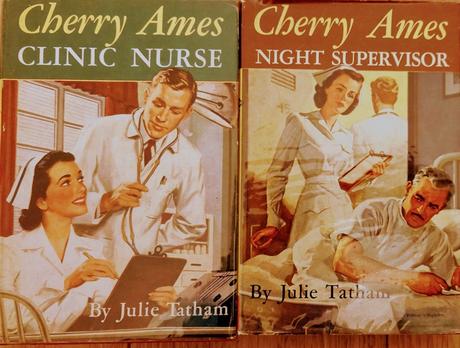
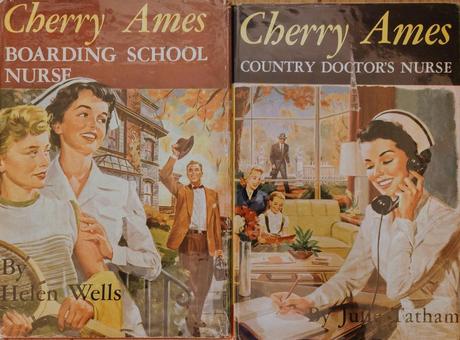
The books are written to a formula prescribed by a hard-headed publisher. Cherry takes a new job and encounters someone who needs help to solve a mystery. Jewels have gone missing, or someone has lost their memory, or an old house is haunted. There is a little danger, light romance and some medical action. The formula is so firmly established that the series was written by not one, but two, authors. Helen Wells (1910-1986) began and ended the series but handed over in the middle to Julie Tatham (1908-1999), and it is hard to tell the difference between them. The hard-headed publisher in question was the Stratemeyer Syndicate, which specialised in series for children (often written by multiple authors). As well as Cherry Ames, Stratemeyer published the Hardy Boys, the Bobbsey Twins and Nancy Drew, gifted detectives all. I liked the Hardys, Bobbseys and Nancy, but Cherry was my favorite by a long way. It was that combination of nursing and crime which gave Cherry’s series more interest, while the others were as insubstantial as their English counterparts, Julian, Dick, George, Anne and Timmy.
In order to keep sales up, Cherry never does what so many heroines of career fiction do – that is, get qualified and, almost at once, give up work to marry the nice men who have pursued them through the story. Cherry meets brilliant doctors, brave pilots, strong cowboys and other heroic types, but she never succumbs. In this case, the formula has the advantage of underlining her dedication to her profession. There is nothing, she often tells us, as satisfying or exciting as caring for the sick. As a child, I did not at all want a career in medicine and I was not really aware of a formula. I was, however, pleased that Cherry did not marry. Romance was fine, but it would certainly get in the way of adventure. (It’s interesting to think about the extent to which things have changed on this front. Presumably Cherry would now be super-busy, juggling career, crime-solving, marriage and children.)
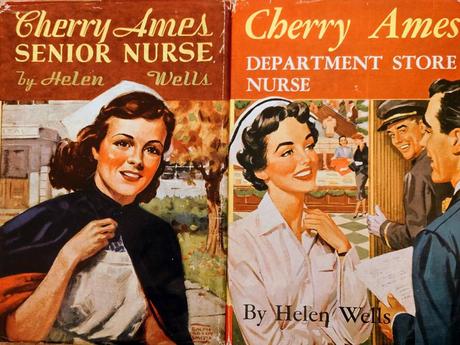
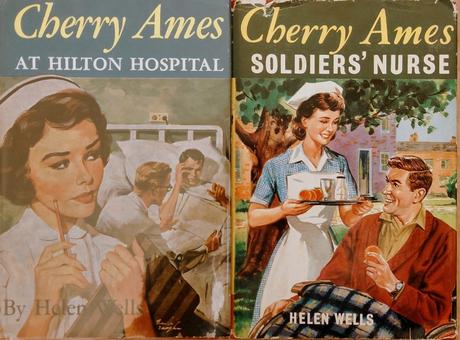
Cruise Nurse is typical of the series. It comes about because Cherry, who has been working her socks off as a district nurse, is exhausted and needs a break. Her boss arranges a temporary job as assistant to a ship’s doctor on a short cruise to South America. Cherry is barely on board before she is caught up in a mystery, helping a young girl find a priceless bequest. She also finds time to sort out a strained relationship between a nervous woman and her young son. This is all standard stuff, and the story could be set just as successfully in a New England town, a Pacific island or war-torn England, all of which are featured elsewhere in the series.
Wherever the setting, Cherry’s work is always shown to be an exacting vocation. According to Linda Laskowski-Jones, the editor-in-chief of Nursing 2018, there is an ‘admirable measure of accuracy’ in the series. In Cruise Nurse, for example, we see Cherry applying the remedies of the day to a feverish patient and elsewhere references to, for example, the wartime development of antibiotics. It is this which gives the books a substance lacking in other Stratemeyer series and shows readers women living independent and fulfilling lives. (This argument can’t by the way bear much weight – the books are far too formulaic. But the point stands.) The depiction of nursing also means that we see not so much the glamorous life of the passengers on cruise ships as the working life of the crew. Cherry and her doctor colleague, the purser and the stewards all wear uniform when they are on duty. They are at the beck and call of the passengers. They eat in their own dining room, and are not allowed to use ship facilities like the swimming pool.
In each of the books Cherry finds herself in a new situation: a new job, often in an unfamiliar place with strangers all around her. In Cruise Nurse she is particularly isolated. Her everyday life is suspended, with the ship almost always on the move and the sea all around. She has no access to friends and family, as she usually has. Nor can she rely on the professional structure of a hospital around her. This is a new world, and she has only herself to rely on. We need not worry, of course. Cherry is more than equal to the task. She is spunky, independent, determined and bright, a good psychologist and a skilled nurse. When she gets into trouble, it is because of these good qualities and skills and they carry her through. Criminals and people in need of help stand no chance against her, even when she is suffering from seasickness. (Val Hewson)

A brief note by Chris! Thank you Val – that very much captures my feelings about this Cherry Ames novel – and indeed the others you kindly introduced me to by lending me your splendid nineteen-fifties editions (I DO promise to return them). As well as always containing what I take to be genuinely useful and at the time cutting-edge information about different kinds of nursing specialisms, and about the ethos of medical care (usually including some tricky ethical dilemmas), each novel indeed always has a plot based in a mystery or detective genre. Cherry often meets prejudice – mainly from those long established in their own medical role – but withstands it where ethically necessary, though she also always finds an encouraging ally or mentor. She is a good learner, but also able to take an independent line. The universe Cherry inhabits is essentially an innocent one where real wickedness is rarely met, yet it also can contain sufficient wrong-doing and deceit to drive our heroine to put wrongs right and restore a common justice – and to keep the reader interested. I first was caught by the Cherry Ames bug when looking for fiction about Second World War British military nurses, and Val suggested the four nineteen-forties Cherry Ames military nursing novels as of potential comparative interest. These are: Cherry Ames Army Nurse (1944), Cherry Ames Chief Nurse (1944), Cherry Ames Flight Nurse (1945) and Cherry Ames Veterans’ Nurse (1946 – I think also published under the title Cherry Ames Soldiers’ Nurse, as in the dust-wrapper featured above). These books certainly, if without breaching the limits of fiction for young people, portray combatants with serious and life-changing injuries, physical and mental. If anything, I was most struck when reading Cherry Ames Cruise Nurse by how much more troublesome the rich cruise liner passengers were than Cherry’s military charges of a few years earlier! However, Cherry puts them right so that they emerge at the end of their voyage better balanced and more independent people – like Cherry herself. Many thanks Val for the images of covers from your collection – they do indeed illuminate the world of the series.
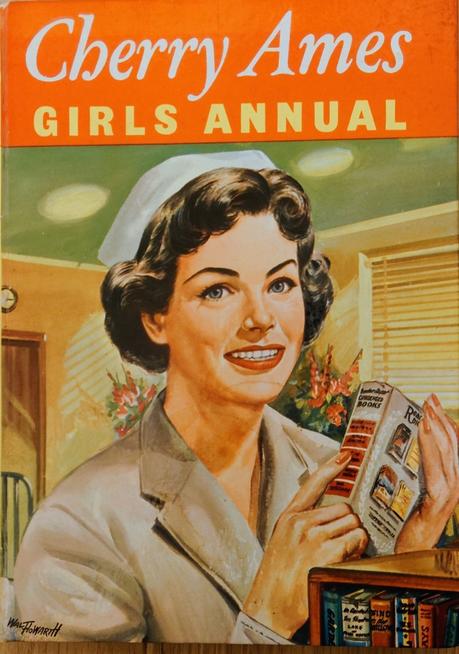
[i] There are also a couple of books by American author Mabel Maney: The Case of the Not-So-Nice Nurse (1993) and The Case of the Good-for-Nothing Girlfriend (1994). Featuring ‘Nancy Clue’ and ‘Cherry Aimless’, these bring out the supposed lesbian subtext of the originals.
[ii] It’s easy to find Cherry Ames novels. There are plenty of original hardback copies around and also modern reprints and even e-books.
